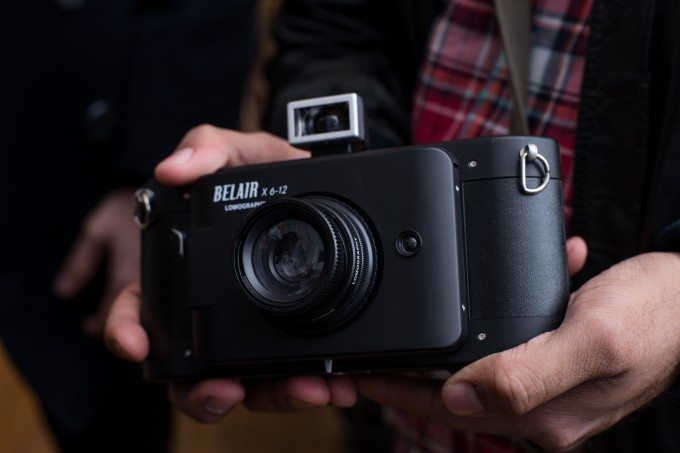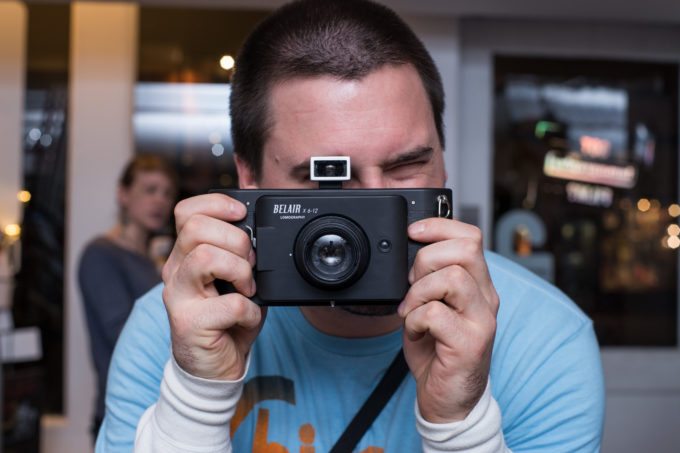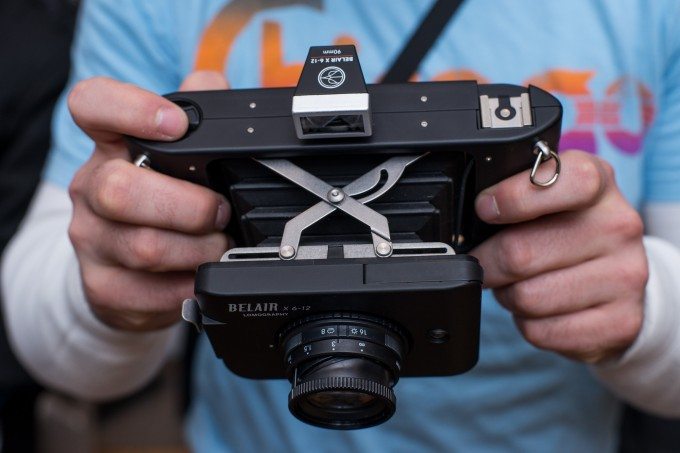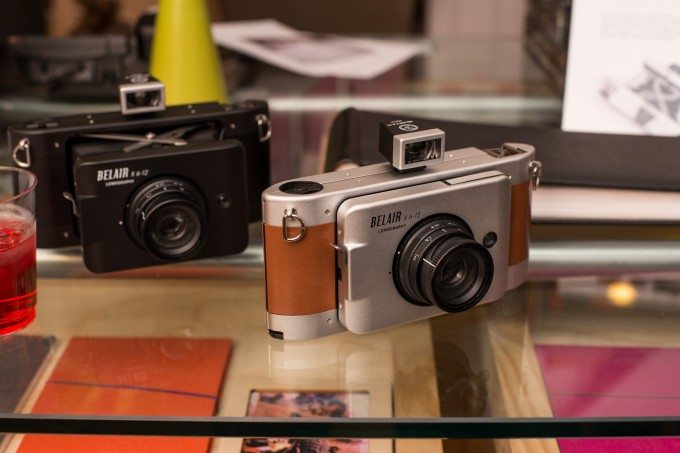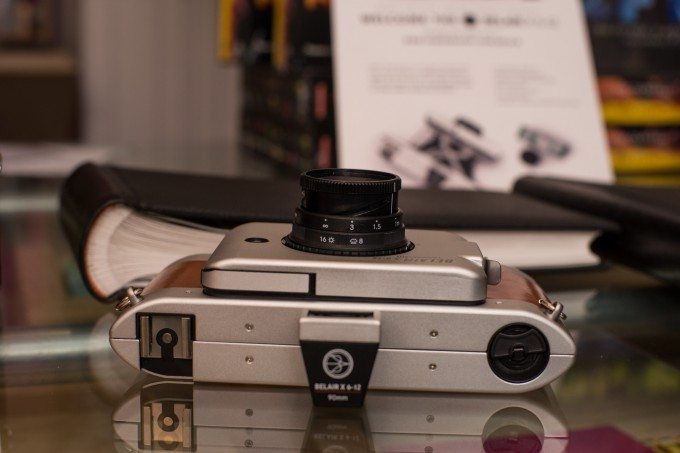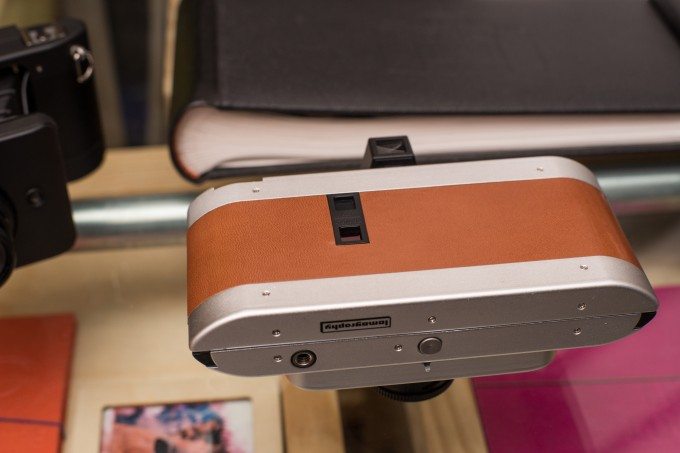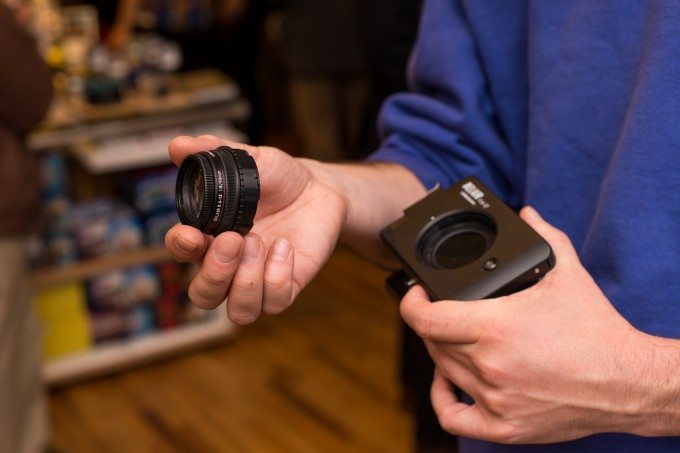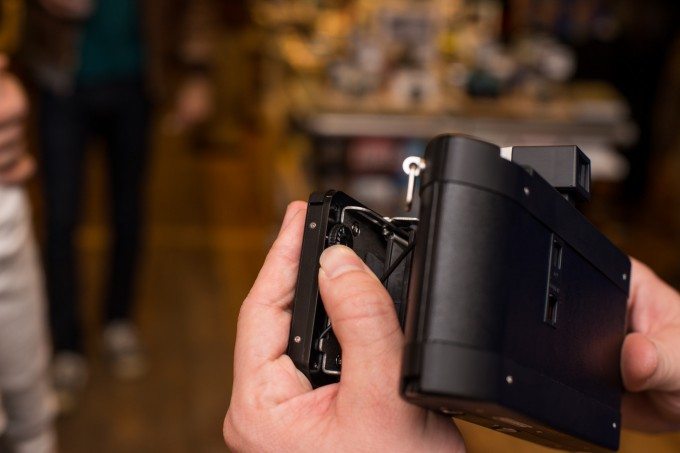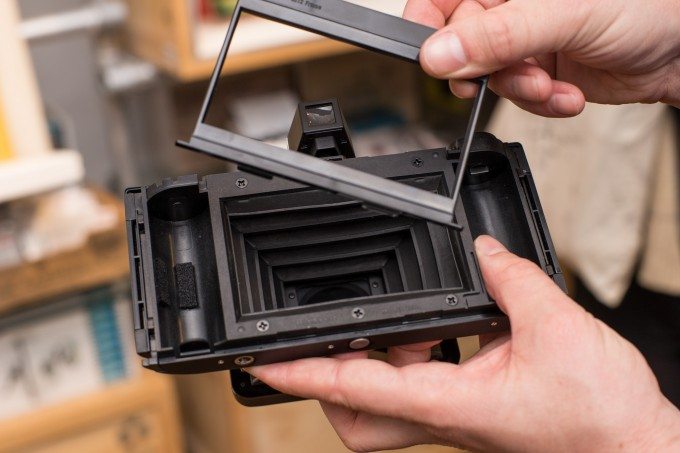Last Updated on 12/01/2012 by Chris Gampat
The Lomography Bel-Air has to have been one of the most exciting announcements this year. The camera has taken the company’s typical image of being nothing more than a hub for hipsters and flipped it upside down. The Bel-Air represents Lomography’s attempt to give users a more advanced camera while still remaining true to its core value of simplicity.
At the company’s 20th anniversary party, we had some fondling time with the camera; and there is quite a bit about it that amazed us. If you’d like to know even more though, you should check out our Q+A with Lomo.
Tech Specs
Taken from our announcement post.
Lomography Belair X 6-12 Specifications
- Exposure Area: 104 x 52mm (6×12), 78 x 52mm (6×9), 52mm x 52mm (6×6)
- Film Type: 120 Roll Film
- Interchangeable Lens Mount: 3 Bayonet Type
- Auto-exposure Mode: Aperture Priority
- Auto-Exposure range: EV4 ~ EV15
- Highest Shutter Speed: 1/125
- Lowest Shutter Speed (B Mode): Unlimited
- Film Sensitivity Supports (ASA/ISO): 50, 100, 200, 400, 800, 1600
- Battery Supply: 2×1.5V (2 x LR44)
- Multiple Exposure: Yes
- Flash Connection: X-type Synchronization Hot-shoe
- Tripod Socket Thread: Standard ¼” Tripod Socket
90mm Lens Specifications
- Lens Focal Length: 90mm
- Maximum Aperture: 1:8
- Minimum Aperture: 1:16
- Angle of View: 65 degrees (6 x 12)
- Standard 35mm equivalent Focal Length: 32mm (6 x 12)
- Standard 35mm equivalent Focal Length: 40mm (6 x 9)
- Standard 35mm equivalent Focal Length: 52mm (6 x 6)
- Focusing Zones: 1m, 1.5m, 3m, Infinity
58mm Lens Specifications
- Lens Focal Length: 58mm
- Maximum Aperture: 1:8
- Minimum Aperture: 1:16
- Angle of View: 90 degrees (6 x 12)
- Standard 35mm equivalent Focal Length: 21mm (6 x 12)
- Standard 35mm equivalent Focal Length: 26mm (6 x 9)
- Standard 35mm equivalent Focal Length: 35mm (6 x 6)
- Focusing Zones: 1m, 1.5m, 3m, Infinity
Ergonomics
The front of the camera is pretty simple. Before I go on though, I need to let users know that Peter is holding the camera totally wrong in this image. Though one would normally go for holding the back of the camera, to get the best results one will actually need to hold the front end that contains the shutter unit, light meter, and lens. The reason for this: The shutter release is on the side of the front. While holding it though, you’ll also need to ensure that your fingers don’t block the light meter that is next ot the lens in the photo above.
The camera’s top has a couple of key controls. Peter’s right index finger is over the film advance and on the opposite end is the hot shoe. The hot shoe will work with PocketWizards if you so choose to take it into the studio.
The bellows are made from rubber and are actually pretty well made. But if the rubber gets a hole in it, it may be tougher to seal it unless you use some sort of rubber gasket. Something that comes to mind immediately is the rubber sealer one uses to repair car tires.
The top of the bellows has a metal collapsing system. In the middle of it is a button that needs to be pressed to collapse the bellows. This button is on both the top and the bottom.
Now don’t get so excited; even though this looks like it has rangefinder focusing, it isn’t rangefinder coupled. The viewfinder shows only the field of view and even has markers inside to show you your approximate framing based on what format you’re shooting.
The Lomography Bel-Air is really quite small. If you can imagine an Apple iPad Mini but thicker, shorter and a hell of a lot more analog, you can imagine the Bel-Air. In fact, it can fit into a coat pocket when collapsed.
Depending on which version you get, it can either be fully plastic or aluminum with leather. All of the lenses so far contain plastic elements, but there are glass lenses on the way.
The back of the camera is very standard and contains the protection for the film.
The lenses come off very easily and are also really very small as you can see. The camera has a leaf shutter as well, so syncing with strobes won’t really be an issue and you shouldn’t have any major movement of the camera when shooting. The lenses have two apertures, f8 and f16.
The area in the photo above is actually very critical to the entire camera. It has the ISO dial in full stop increments of 50, 100, 200, 400, 800, and 1600. But right above this is the battery compartment for the light meter; which is an ambient light meter.
So what does that mean? Well, if you’re shooting this camera in the studio and you don’t have lots of ambient light, then you’ll need to develop a hack. Let’s say you’re shooting at ISO 100 with studio lights and barely any ambient except for your modeling light. Because the light meter is an ambient, it may give you an exposure of somewhere around a second or longer.
Don’t want that? Well then you’ll need to use an ambient light meter to calculate your lighting and to increase the shutter speed to a more handhold-able time, you’ll need to crank up the ISO to perhaps 1600.
Open up the back of the camera and you’ll also see framers for the different formats that you want to use.
Focusing
In order to focus the camera, you’ll need to zone focus according to the lens’s reading. There is no depth of field scale on the lenses though.
Image Quality
Take a look at the different galleries that Lomography has on their website. I really wish they didn’t put up as many cross processed images.
First Impressions
The camera indeed seems very quirky but also cool. With all of this said though, we’re not sure who it is exactly targeted to. Landscape shooters will make very great use of it as will studio shooters as long as they have experience and a working knowledge of metering. There a couple of design factors that I am questioning though, such as the shutter mechanism trigger on the front end of the camera.
But in order to be fair, we will need to give it a full run through, and we’re working on getting a review unit.
Please Support The Phoblographer
We love to bring you guys the latest and greatest news and gear related stuff. However, we can’t keep doing that unless we have your continued support. If you would like to purchase any of the items mentioned, please do so by clicking our links first and then purchasing the items as we then get a small portion of the sale to help run the website.



